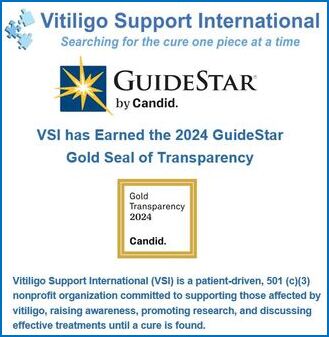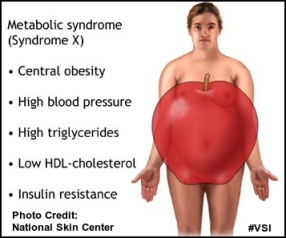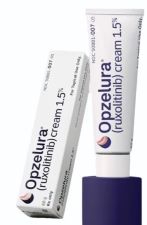Contact Us
Online: www.VitiligoSupport.org
Email: Contact Us
Postal Mail Address
Vitiligo Support International
P.O. Box 3565
Lynchburg Va 24503
Phone: (434) 326-5380
Committee Chair
Pearl E. Grimes, M.D.
Ted A. Grossbart, Ph.D.
Sancy A. Leachman, M.D.
I. Caroline Le Poole, Ph.D.
Mauro Picardo, M.D.
Nanette B. Silverberg, M.D.
Richard A. Spritz, M.D.
Alain Taieb, M.D., Ph.D.
Wiete Westerhof, M.D., Ph.D
Online: www.VitiligoSupport.org
Email: Contact Us
Postal Mail Address
Vitiligo Support International
P.O. Box 3565
Lynchburg Va 24503
Phone: (434) 326-5380
Dear VSI Members, Friends, and Donors,

If you or someone you love has vitiligo, where can you go to get answers to real-world questions and problems that crop up during everyday life with vitiligo? As a person who’s been living with vitiligo for nearly 35 years, I know it’s not easy to find accurate, understandable, vitiligo-relevant information.
The purpose of VSI’s newsletter articles is not only to keep our members informed about topics that could impact their lives, but to communicate that information in relatable, non-scientific terminology, which is not an easy task.
Your doctor may or may not know about underlying conditions associated with vitiligo. For instance, would your doctor know to check for thyroid or metabolic problems if you mention that your vitiligo is spreading and you’re experiencing sleep issues, or would they suggest that you “wait and see?”
The earlier symptoms are identified, the earlier the root cause(s) can be addressed. When you see a slippery slope ahead, you shouldn’t have to wait for the crash before taking preventive measures!
Beyond White Spots:
Vitiligo is a complex disease. If you recently developed vitiligo, or have had it for decades, the information we’re highlighting in the article below is very important, and, based on the feedback many of you have shared with us, the topic is not one you can necessarily count on your doctor to be familiar with.
You Will Always Be Your Own Best Advocate.
VSI provides knowledge and tools to help you ask the right questions at the right time, empowering you to be a co-decision maker with your healthcare provider and to feel confident that together you are making the best decisions for your long-term health.
Do You Count on VSI for Current,
Trustworthy, Educational Resources?
Support VSI
As a 501(c)(3) Nonprofit Organization,VSI is Dependent on Public Funding to Operate
Articles like the one written below are developed specifically for
our readers. We select topics based on the questions you’ve asked,
and strive to convey the information in everyday language.
We Hope the Information Makes a Difference in Your Life.
If You Find Value VSI’s Work,
Please Show Your Support
Sincerely,

Jackie Gardner
Executive Director

With a database of more than 1.8 million IRS-recognized organizations,
GuideStar is the most complete source of information about U.S. charities.
Search Vitiligo on Guidestar.
For centuries, vitiligo was thought of as a cosmetic disorder affecting only the skin. Many of us old-timers were told that vitiligo wouldn’t hurt us, so no need to worry. While that was (and still is) insulting, considering the emotional and psychological impact of a disease that many feel robs them of their identity, a great deal of genetic research has now verified a number of systemic associations, of which some, if not recognized/treated, can be potentially quite serious.
Early Detection Leads to Better Outcomes
Depending on your medical history, personal stressors and/or lifestyle, you may or may not have experienced any of the other health related conditions (genetically) associated with vitiligo. Or it’s possible that you have or are currently experiencing related problems and didn’t know it.
Vitiligo research has exploded over the past 10 years. The discoveries have come as steppingstones from the 2010 confirmation that generalized vitiligo is indeed an autoimmune disease to the first FDA-approved treatment in 2022. Along the way, each overturned stone has yielded new clues, somewhat like charting a map. Some roads that seemed so promising have ended at dead ends. But even those roads yielded clues.
Through this exploration, as scientists have worked to identify the genes and pathways associated with vitiligo, they’ve learned that many of these same genes are shared by other diseases.
The Purpose of this Article is Twofold
1. To update you on the underlying conditions and disorders now documented to be associated with vitiligo.
2. To familiarize you with the potential signs and symptoms related to these genetic predispositions to help you recognize (minor) changes in your health that might otherwise be overlooked or ignored.
Early detection can prevent disease progression,
reduce complications and improve long-term health.
No Longer a Skin-Only Disease
The diagram below shows the body organs and systems
that can be affected by vitiligo-associated conditions.
What is the Connection?How Are They Related?
It can be confusing trying to understand how one condition can affect, or be affected by, so many others. One does not cause another, nor does having one automatically mean that you will get others.
Many of the conditions associated with vitiligo are related genetically, meaning in order to develop the disorder, you must carry some of the pre-disposing genes. However, while the genetic or biological components play a role in a person’s susceptibility, research indicates that this genetic predisposition may factor as little as 30% toward disease development, with the environmental factors weighing in closer to 70%.
What are Environmental Factors?
Environmental factors, also referred to as environmental triggers, are non-genetic, environmental, and lifestyle factors that may play an important role in triggering the development and progression of autoimmune (A/I) disease(s) in those who are already genetically predisposed (having the genes) to the disease(s).
Environmental triggers such as bacterial and viral infections, chemical toxins, environmental pollutants, diet, food allergies, insufficient vitamin D levels, and chronic emotional/psychological stress have been blamed for immune dysregulation leading to autoimmune activation.
Image Source: Cristal-Lilov A, Salmon A, Erez O, Salmon G. Mental and Physiological Structures and Mechanisms of Overprotection in the Aetiology of Autoimmune Disease. J Med-Clin. Res & Rev. 2021: 5(8): 1-14
Emotional stress should never be underestimated as a trigger, not only for vitiligo, but for autoimmune diseases in general. Many retrospective studies cite as many as 80% of individuals reporting uncommon emotional stress preceding the onset or worsening of an autoimmune disease. To further complicate the situation, research has also found that not only can stress trigger the disease, but the disease itself can cause additional stress, creating a vicious cycle.
Autoimmune Connection
A recent 10-year retrospective study found that approximately
23% of those with vitiligo have at least one other autoimmune condition.
In some instances, the very same gene(s) associated with the risk of developing one specific autoimmune disease (like vitiligo) have also been found to be associated with other autoimmune diseases. This shared association (where all of the shared genes intersect in diagram below) helps to explain why some people who have been diagnosed with one A/I disease may be more likely to develop other A/I diseases that share the same risk genes.
Knowing about the relationship with the other associated conditions can give you the heads up on recognizing less obvious changes in your health as potential symptoms of underlying conditions. This gives you the opportunity to develop a proactive strategy for managing and controlling your health before your health controls you.
Autoimmune Conditions Among the Most Commonly Associated with Vitiligo
Autoimmune thyroid disease
Rheumatoid arthritis
Type 1 diabetes
Psoriasis
Pernicious anemia
Addison’s disease
Systemic lupus erythematosus
Celiac disease
Crohn’s disease
Ulcerative colitis
Inflammatory bowel disease
Changes are Clues
Maybe your vitiligo has been stable for some time, but recently started spreading. When you notice new areas of pigment loss, your first thought may likely be about your vitiligo and seeing your dermatologist to stop the spread. However, you may have been experiencing other subtle hints of change for some time that you didn’t recognize or think/know to report to your doctor.
Recognizing Changes as Symptoms
Part of the difficulty is that many symptoms are subtle and nonspecific, such as fatigue, weight gain, or poor concentration. To further complicate, many symptoms are common to more than one cause. For instance, an increase in blood pressure and/or cholesterol, fatigue, or weight gain could be the result of poor diet and/or lifestyle. However, those can also be signs of more serious problems such as thyroid dysfunction or metabolic disturbances, both of which are established underlying conditions associated with vitiligo.
Autoimmune Thyroid Disease
Autoimmune Thyroid Disease is the most prevalent other A/I disease found among those with vitiligo and/or their family members. Not only has this risk been estimated to be 2.5 times higher for those with vitiligo than the normal population, but according to a research study from Florence, Italy, thyroid autoimmunity might play an important role not only in triggering the onset of vitiligo, but also maintaining the depigmentation process of vitiligo.
So, if you were just diagnosed with vitiligo, or if after a long period of being stable, your vitiligo suddenly began to spread, thyroid testing would be a very important first step to take so that you can respond quickly in order to try to change the direction of both diseases.
There Are Two Types of Autoimmune Thyroid Disease
Hashimoto’s, a type of hypothyroidism (underactive thyroid)
Graves’ disease, a type of hyperthyroidism (overactive thyroid)
Hypo/Underactive Thyroid causes a decrease in metabolism, which will in time result in a decrease in many of the body’s functions. The symptoms listed below are a few of those typical of hypothyroidism. However, depending on a variety of factors, you may experience some, but not others. The longer the condition is left untreated, the more symptoms you are likely to experience, and the more severe they may become.

Hyper/Overactive Thyroid causes an increase in metabolism, resulting in symptoms associated with an increase in many of the body’s functions. As noted above, the symptoms listed below are a few of those typically associated with hyperthyroidism; however, each person’s experience is different. Also, as noted above, the earlier the condition is treated, the better.

Metabolic Syndrome and Vitiligo

Metabolic syndrome (MetS) is a cluster of conditions that occur together, increasing the risk of heart disease, stroke, and type 2 diabetes. We now have over 10 years of research indicating a higher incidence of metabolic syndrome among those with vitiligo.
Symptoms of Metabolic Syndrome
Symptoms include increased blood pressure, high blood sugar, insulin resistance, excess body fat around the waist, and abnormal cholesterol or triglyceride levels.
With many of these same symptoms occurring among other vitiligo-associated disorders, having vitiligo is now considered to be a risk factor for developing metabolic syndrome.
A person is diagnosed as having metabolic syndrome when they have any three or more of these symptoms. Having only one doesn’t mean you have MetS, but it puts you at a greater risk of developing serious disease.
The increased risk of MetS symptoms leading to multiple, serious, long-term (chronic) conditions such as heart disease, means that testing, early diagnosis, and treatment are highly advised. This is also why it’s important to know, recognize, and be able to convey any changes or symptoms you’ve noticed, with your doctor as early as possible.
The Whole Picture

Diagnosing an illness can be similar to solving a puzzle. The more pieces you have, the better chance you have of finding the correct answer. With only half of the pieces, it would be difficult to come up with the correct diagnosis. The more information you can provide your doctor, the better your chances of a positive outcome.
A single incidence of high blood pressure could just be an off day from rushing your schedule for a doctor’s appointment. However, when you are experiencing multiple other symptoms such as fatigue, increased anxiety, or abnormal cholesterol or triglyceride levels, it’s time to step back and look at the whole picture.
Are the symptoms related in any way? What is the root cause of the symptoms?
Research indicates that when left untreated, mild thyroid dysfunction is likely to progress, and that both subclinical hypothyroidism and overt hypothyroidism are associated with an increased risk of MetS. So, the wait and see approach could be detrimental.
Be aware of changes in your health.This is your body communicating.

“If you listen to your body when it whispers,
you won’t have to hear it scream.”
Cherokee Proverb
Mark Hyman, MD, a practicing family physician and Founder and Senior Advisor for the Cleveland Clinic Center for Functional Medicine, compares treating the symptoms but not the cause to taking the batteries out of a smoke detector instead of trying to find the fire. In his practice, he begins by looking at ALL of the symptoms as clues to the deeper imbalances, saying that once you find and correct the imbalance, the symptoms go away.
Finding and Choosing
a Health Care Provider
There are many different healthcare models to consider. Identifying the approach that best fits your health, lifestyle, and personal needs is not always easy. You can narrow your choices by identifying your local options and availabilities. You may find that a combination of expertise, methods, and personalities works best for you.
Functional/Proactive
vs
Conventional/Reactive
Functional Medicine: Focuses on identifying the root cause of symptoms, which are seen as clues for identifying underlying sources that triggered the symptoms. Their goal is to restore health by treating the root cause of health issues, not just the symptoms.
Proactive care is more focused on prevention and early intervention, which can be very important for those predisposed to long-term (chronic) conditions such as cardiovascular disease and diabetes. Proactive care uses predictive models to help identify individuals at risk of developing chronic conditions and can offer preventative measures to delay or reduce the potential of symptoms.
Conventional Medicine: Conventional medicine focuses on treating the symptoms and issues of a certain area. Treatments may include methods such as prescription drugs, radiation, or surgery.
Reactive healthcare primarily treats health problems that have already occurred, rather than preventing them. This model works best for short-term acute illnesses. Symptoms of long-term health conditions frequently begin and progress more slowly. By the time enough symptoms have warranted a trip to the doctor, there may already be irreversible damage.
Closing
Here we’ve highlighted two of the more common underlying conditions now identified as being associated with vitiligo. However, all of the above listed conditions are chronic and can be equally detrimental to your health if left untreated. The nature of chronic conditions is that they generally develop slowly and worsen over time. Once developed, chronic conditions cannot be cured. However, the good news is, with a good health care plan, many can be controlled.
Be Aware: Learn about your personal potential genetic predispositions and their associated symptoms.
Be a Sleuth: Remember that changes in your day-to-day health may be symptoms and/or clues.
Look at the Whole Picture: Consider the possibility of individual symptoms being related.
Seek a Provider or Team with treatment philosophies and methods similar to those you find important. Provide your provider with as much background information as possible.

Use of Makeup and Moisturizer While Wearing Opzelura
 Q. After reading VSI’s newsletter articles about Opzelura, and seeing the commercials, as well as researching myself, I started using Opzelura.
Q. After reading VSI’s newsletter articles about Opzelura, and seeing the commercials, as well as researching myself, I started using Opzelura.
I am wondering if you have any information about the use of moisturizer and makeup while using Opzelura.
Can I use them at the same time? If so, which should I use first?
Any information is most appreciated.
VSI Member: ZW
A. VSI Reached out to Incyte, the manufacturer of Opzelura.
Regarding the use of Opzelura with moisturizers and makeup as follows:
“Patients should apply Opzelura to clean, dry skin. If sunscreen or moisturizer had already been applied to the area(s) to be treated, the treatment area(s) should be washed with mild soap and water and patted dry before use of Opzelura. Once Opzelura has completely dried, non-medicated products such as sunscreen, makeup, and moisturizers can be applied. Ask your healthcare provider if you have questions about using Opzelura.”
Multi-Center, Phase 3, Povorcitinib Clinical Trial Evaluating the Once-Daily, Oral Jak Inhibitor, for the Treatment of Non-Segmental Vitiligo.
This is a 52-week, Phase 3 randomized, double-blind, placebo-controlled, multi-center study, investigating the efficacy and safety, of povorcitinib, an oral JAK 1 inhibitor, in participants with non-segmental vitiligo.
Research shows that when the JAK signaling pathway becomes over-
active, it drives the inflammation associated with triggering the onset of,
and subsequent progression of vitiligo. The goal of povorcitinib, a once daily oral tablet, is to reduce or block this process.
Participants will be in the study for about 1 year and attend about 11 study visits.
Key Inclusion Criteria
Additional Eligibility Criteria
Currently Recruiting in Bulgaria, Canada, Poland
and the following U.S. States:
AL, CA, FL, GA, IL, LA, MI, OH, OR, TX, WA
Recruiting Locations Being Updated!
DO YOU HAVE GENERALIZED VITILIGO
ON THE FACE AND BODY (for at least 3 months)?
Study Information:
An investigational therapy called afamelanotide is being evaluated as a treatment for vitiligo patients with darker skin types.
STUDY DURATION: 12 months (Eligibility assessment + 5 months of treatment + 6 months of follow-up)
TWO STUDY TREATMENT GROUPS:
A. Narrowband ultraviolet B (NB-UVB) in combination with afamelanotide
B. NB-UVB alone
You may qualify if you:
Participation involves:
Currently Recruiting in:
CA, FL, KS/MO, LA, MI, MN, SC, TN, TX, VA
New Locations Being Added Soon!
EMAIL FOR ADDITIONAL INFORMATION AND LOCATIONS:
[email protected]
Online Shopping Can Benefit VSI!
Support VSI with Ebay!
Do you sell items on eBay, or want to hold an online garage sale? If so, consider donating a percentage of your proceeds to VSI through eBay’s Giving Works program! It’s easy – when you list an item through a Giving Works listing, choose to send 10-100% of the final sale price to VSI. Your listing will have a special placement and designation. You’ll receive a proportional fee credit from eBay, and will also receive a tax donation receipt when the donation is deducted from your funds received. It’s a great opportunity to make some money for yourself and for VSI, so clean out those closets and garages and get selling! To Learn About eBay for Charity: Click here
Tobi Cares Donation Program
Tobi is an online women’s clothing design label that brings LA style from its design studio direct to its online clothing store at tobi.com. Go to Tobi Cares and sign up for VSI to receive 1% of your purchase amount.
IGIVE SHOPPING
iGive.com offers access to free shipping deals and exclusive coupons, on top of the great deals you’ll find every day through its network of 1,000+ stores, including Pottery Barn, REI, Staples, Petco, Expedia, Best Buy, QVC and many more. Best of all, up to 26% of your purchase at each store is donated to VSI at no cost to you! Let friends and family know so they can support VSI, too. Click register for iGive to get started today, and download the iGive button to automatically benefit VSI whenever you go to an included store. You can also raise a penny per search through iGive’s search engine, isearchigive.com.
GOODSEARCH SHOPPING AND DINING!
GoodSearch and Goodshop, like iGive, offers coupons, discounts, and donations to VSI through its network of over 5,000 stores. Just click the link above to get the savings started and the donations flowing!
